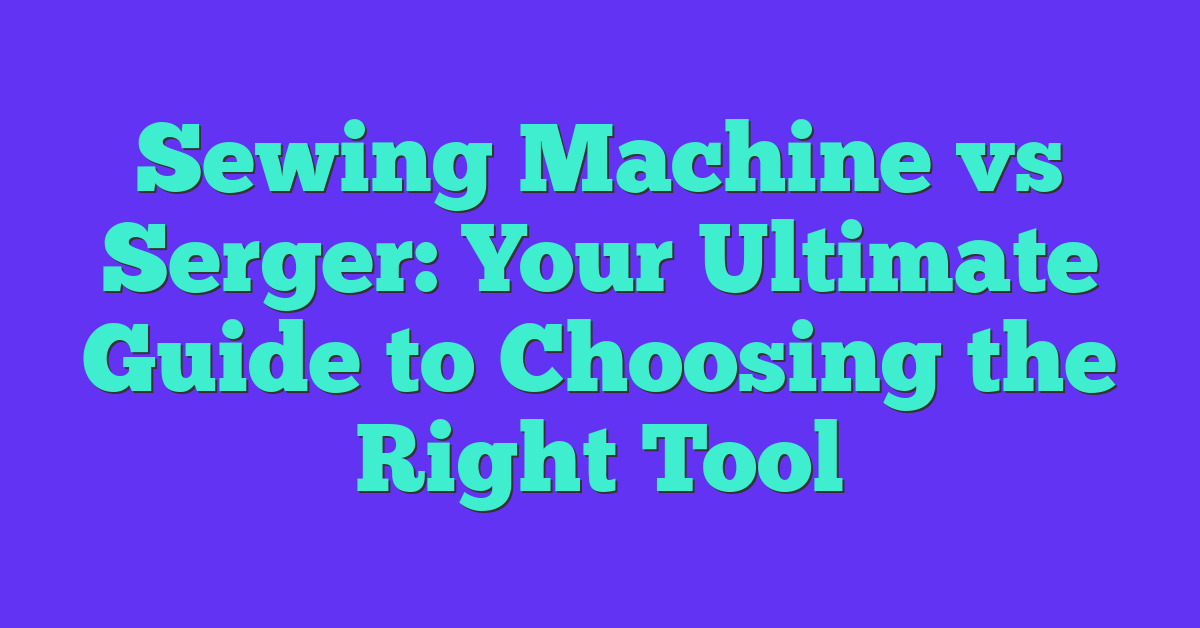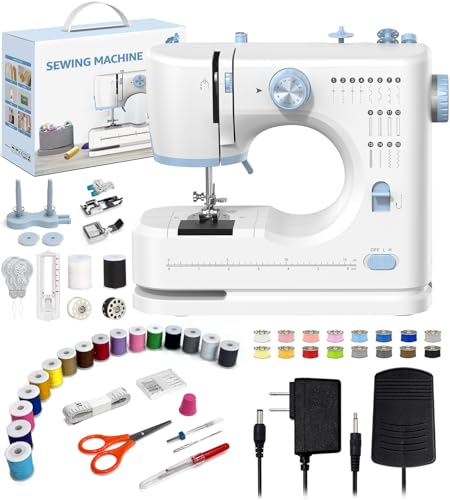If you’re a sewing enthusiast, chances are you’ve found yourself in the middle of the age-old debate: sewing machine vs serger. Understanding the key differences, strengths and limitations of each can help you make an informed decision about what’s best for your crafting needs.
Now let’s set the stage. Picture this: you’re excited about a new DIY project. You’ve got your fabric, pattern, and enthusiasm ready – but when it comes to choosing between a serger or a sewing machine, things get a little tricky. Each has its own unique features that make it shine in certain scenarios.
A traditional sewing machine is like your reliable old friend who’s always there for you. It’s versatile and easy to use, making it perfect for beginners and pros alike. On the other hand, a serger (also known as an overlock machine) is like that specialist buddy who knows exactly how to give your projects a professional finish with clean edges and secure seams.
Remember folks – there’s no one-size-fits-all answer here! It all depends on what kind of sewing journey YOU want to embark on.
Understanding the Basics: Sewing Machine and Serger
Diving into the world of sewing? You might be wondering what’s the deal with sewing machines and sergers. Well, let’s break it down for you.
A sewing machine is your best friend when it comes to basic stitching tasks. It’s like a Swiss army knife in your crafting toolbox – versatile, reliable, and oh-so-handy! Whether you’re hemming jeans, creating quilts or making masks, a sewing machine has got you covered. They come with a variety of stitch options too.
- Straight Stitch: Perfect for most projects
- Zigzag Stitch: Great for stretchy fabrics
- Buttonhole Stitch: As the name suggests, ideal for buttonholes
Now, meet the serger – also known as an overlock machine. This baby is all about finishing edges and seams professionally. Think of those neat edges on store-bought clothes – that’s a serger’s handiwork! It works at lightning speed too; some can serge up to 1700 stitches per minute!
But here’s something important to remember – while a serger can’t replace a traditional sewing machine altogether (it lacks certain functionalities like zippers or topstitching), it surely complements one brilliantly!
So there we have it folks! A quick run-down of these two essential tools of the trade to help get your creative juices flowing. Happy stitching!
Distinguishing Features of a Sewing Machine
It’s pretty remarkable how much you can achieve with a basic sewing machine. You’re not just limited to mending and hemming! These versatile tools boast several features that set them apart from other stitching equipment, such as sergers.
First off, sewing machines are all about precision. They allow you to adjust the stitch length and width, giving you full control over your work. Whether it’s delicate silk or rugged denim, you’ve got the power to make perfect stitches every time.
Versatility is another strength of the humble sewing machine. With their wide array of stitches available – straight, zigzag, blind hem and more – they’re ready for any project you throw at them. Plus, most models come with different foot attachments which further expands their functionality. Got a zipper to install? There’s a foot for that! Need to create buttonholes? They’ve got you covered!
Moreover, let’s not forget about decorative stitches. If creativity is your game then a sewing machine is your MVP (Most Valuable Player). From scalloped edges to monograms, these intricate designs add flair and uniqueness to your projects.
Finally yet importantly is the capability of sewing machines in handling multiple layers of fabric concurrently. When making quilts or anything with padding involved this feature becomes incredibly useful.

Here are some key features:
- Adjustable stitch length & width
- Variety of stitches
- Different foot attachments
- Decorative stitches
- Ability to handle multiple fabric layers
So there we have it! Some distinguishing elements that place sewing machines in a league of their own compared to sergers or overlockers.
Highlighting Key Functions of a Serger
Diving straight into the world of sergers, you’ll quickly discover they’re not your average sewing machine. Sergers, also known as overlock machines, are uniquely designed to provide clean finishes on seam edges and can handle a multitude of fabrics with ease.
First off, let’s chat about speed. A typical sewing machine might give you 800-1500 stitches per minute (SPM), but a serger? Well, it will blow that out of the water! Sergers can deliver up to 1300-1500 SPM or even more in some models. Imagine the time you’d save on those larger projects!
| Type | Stitches Per Minute |
|---|---|
| Sewing Machine | 800-1500 SPM |
| Serger | Up to 1500+ SPM |
Now let’s talk versatility. When it comes to finishing seams and edges, sergers truly shine. They trim and encase raw edges in one fell swoop for a professional finish that’s tough to achieve with an ordinary sewing machine. Plus, they’re perfect for creating rolled hems and decorative edges – talk about an upgrade!
« Sewing Craft Kits for Adults: Unleash Your Inner Tailor Today!
Unlock the Secrets: The Surprising Truth About Sewing Scissors vs Fabric Scissors »
What about handling different types of fabric? Here’s where things get exciting! Your regular sewing machine may struggle with stretchy knits or super fine fabrics. However, a serger handles these like a champ – providing neat, secure seams every time.
Lastly but certainly not least important – differential feed system is another key function offered by sergers. This feature allows adjusting how much material is fed through the machine at once. It helps prevent puckering on lightweight fabrics and stretching on knits – ensuring your project looks top-notch no matter what material you’re working with.
And there you have it! The speed demon improviser that handles tricky fabrics like it’s no big deal – that’s your friendly neighborhood serger for you. You’re now well on your way to understanding why sergers are a fantastic addition to any sewing enthusiast’s arsenal. Just remember, it doesn’t replace your sewing machine but rather complements it – like a superhero sidekick!
Sewing Machine vs Serger: The Stitch Types
Diving right into the heart of our topic, let’s kick off by talking about the different stitch types that a sewing machine and a serger can produce. Your choice between these two tools often comes down to the kind of stitching you’re planning to do.
Starting with the sewing machine, it’s your versatile pal in creating various stitches. You’ve got your straight stitch for basic seams and topstitching, zigzag stitch for stretch fabrics or finishing raw edges, blind hem stitch to make invisible hems on garments, decorative stitches for embroidery work…the list goes on! In fact, some high-end models offer up to 200 unique stitches!
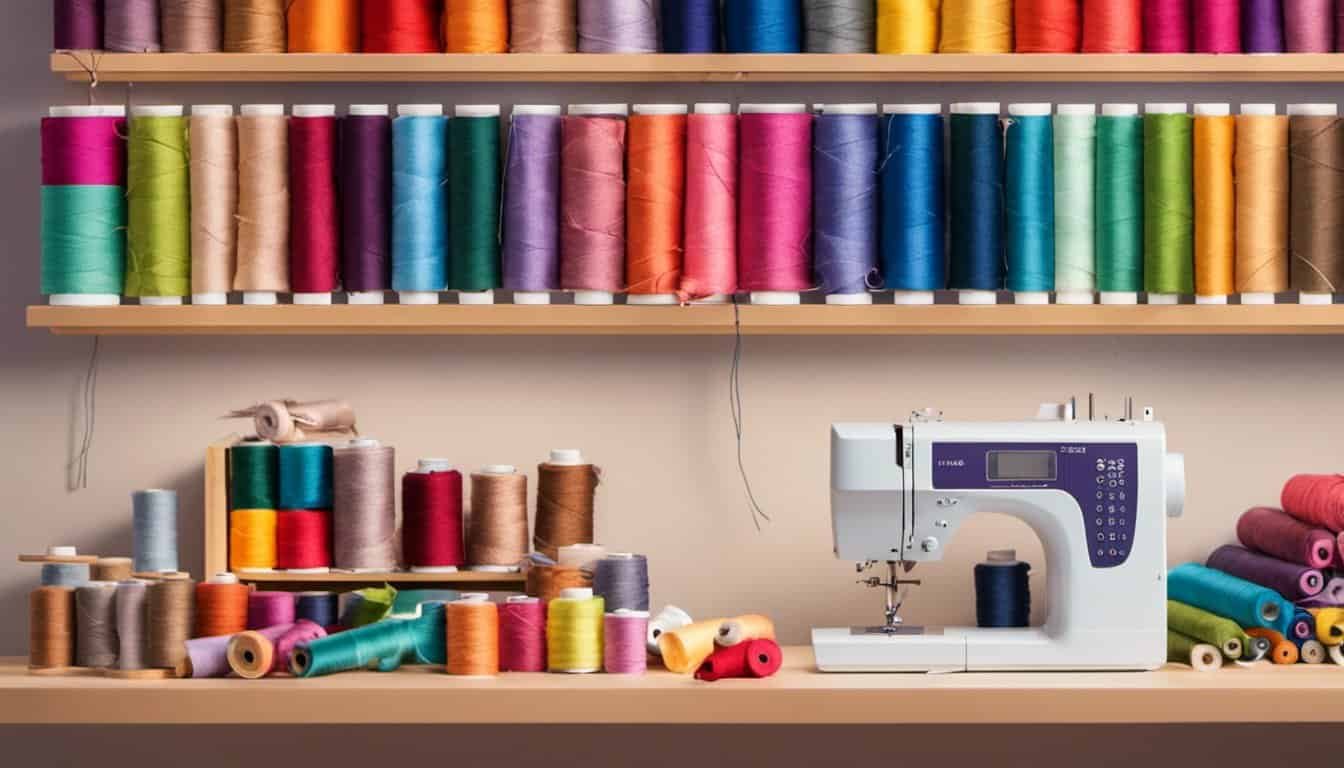
Switching gears to sergers now. Known as overlock machines too, they’re popular for their ability to create clean and professional finishes. Take your typical 4-thread overlock – it provides sturdy seams while simultaneously trimming excess fabric and finishing edges.
But wait there’s more! Sergers are also great at producing rolled hems (just think dainty napkin edges), chain stitches (perfect for securing multiple layers of fabric), flatlocking (for decorative open seams) among others.
However, it’s important not just knowing what each machine can do but how they differ in their approach. Sewing machines give you precision control with adjustable speed settings making them perfect for detail-oriented tasks like buttonholes or intricate designs. On flipside though, they aren’t as efficient in handling large volumes of fabric compared to sergers.
Sergers are speedy little devils! They excel at mass production tasks due to their fast operating speed which can reach up to 1700 stitches per minute! But remember they lack in flexibility when it comes down to variety of stitches.
Here’s a quick comparison:
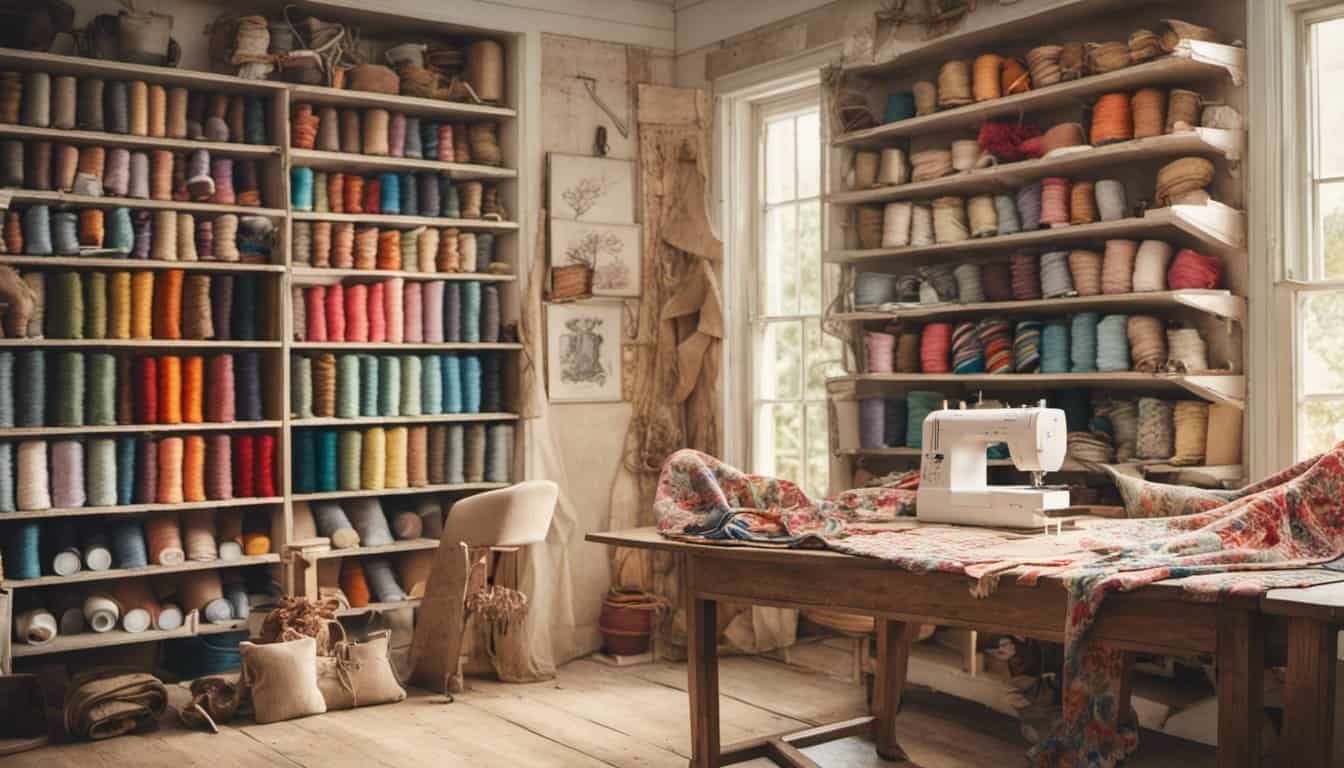
| Feature | Sewing Machine | Serger |
|---|---|---|
| Variety of Stitches | Yes, up to 200 types | Limited, specializes in overlock and special stitches |
| Speed | Adjustable, slower compared to serger | Fast, up to 1700 stitches per minute |
| Precision Control | Excellent for detail-oriented tasks | Not as good |
To sum it up, if you’re after versatility and control for various projects – a sewing machine is your best bet. But for speed and professional finishes especially on large volumes of fabric – a serger might be just what you need!
Ease of Use: Comparing Learning Curves
You’re likely wondering which machine will be easier to use when you’re starting off. Is it the sewing machine or the serger? Let’s delve right into that.
Sewing machines are incredibly popular, partly because they’re relatively easy to pick up and start using. You’ll find a ton of resources online, from YouTube tutorials to online classes on platforms like Skillshare. Most beginners start with simple projects like pillowcases or table runners before graduating to more complex tasks such as crafting garments.
On the other hand, if we talk about sergers, there’s a bit more complexity involved. Sergers can handle multiple threads at once (usually between two and five), which requires slightly more coordination than a standard sewing machine. It’s not uncommon for beginners to feel overwhelmed by threading a serger alone! That being said, once you get the hang of it, you’ll find that a serger can do some things much faster and cleaner than your average sewing machine.
To give you an idea of how these differences might play out in real life, let’s take a quick look at some numbers:
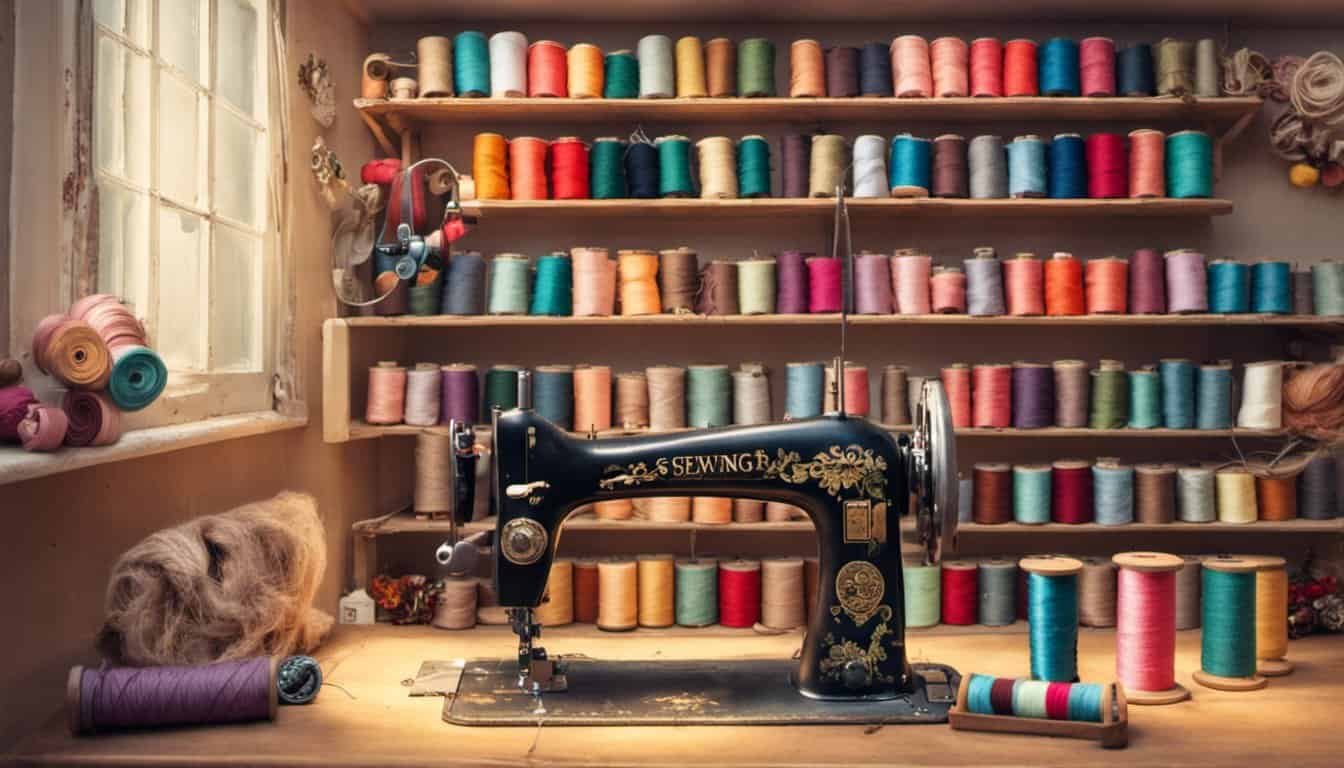
| Machine Type | Average Time to Learn Basic Skills |
|---|---|
| Sewing Machine | 20-30 hours |
| Serger | 40-50 hours |
These figures are just averages though – everyone learns at their own pace! Don’t be discouraged if it takes you longer; remember the journey is part of the fun!
Now if we compare this data side-by-side:
- Sewing machines generally have shorter learning curves.
- Sergers might seem daunting initially but offer great efficiency in the long run.
So in essence, both types of machines have their own set of pros and cons when it comes to ease-of-use and learning curves. It truly depends on what type of projects you plan on tackling and how much time you’re willing to invest in learning. But remember, no matter which machine you choose, practice makes perfect!
Price Point Analysis: Sewing Machine vs Serger
Hey there, sewing enthusiasts! Let’s take a deep dive into the world of your trusty machines. When it comes to price points between sewing machines and sergers, you’re probably wondering which one gives you more bang for your buck.
Starting with the traditional sewing machine, it’s usually the more affordable option. You can find plenty of good quality models under $200. Here’s a quick breakdown:

| Price Range | Quality |
|---|---|
| Under $100 | Entry-level, ideal for beginners |
| $100 – $200 | Mid-range, offers more features |
| Above $200 | High-end, intended for professionals |
Now let’s shift gears and chat about sergers. While they are often viewed as a luxury appliance in the sewing room due to their pricing, they offer immense value when you consider their capabilities and efficiency. Most entry level sergers start from around $200 and can go upwards to over a whopping $2,000 for professional-grade models.
But don’t let those numbers scare you! The price of both these machines primarily depends on their features and overall quality. For instance:
- Sergers may be expensive but they provide speed (up to 1,300 stitches per minute!) and neatness with their ability to trim excess fabric.
- On the other hand, basic sewing machines are cheaper but might lack advanced features found on pricier models like automatic needle threader or built-in stitch patterns.
So at the end of the day, your choice between a sewing machine or a serger boils down not just to cost but also what suits your needs best as an individual tailor or craftsperson.
Remember that investing in either machine is investing in your creativity and productivity – priceless indeed!
Ideal Projects for Each Machine Type
Dive right in, and let’s talk sewing machines versus sergers. You might be wondering which machine type is best suited for your next project. Hang tight! We’re about to break it down.

Your trusty sewing machine is a versatile workhorse. It’s perfect for most everyday projects that demand precision stitching. Whether you’re piecing together a chic summer dress or crafting decorative pillows for your couch, the sewing machine has got you covered.
- Stitching patterns into fabric? Check.
- Adding zippers or buttonholes? Absolutely.
- Quilting an heirloom blanket? Without a doubt.
But here’s where things get interesting: the serger – also known as an overlock machine – shines when it comes to efficiently finishing edges and seams on knit or woven fabrics. Its ability to trim, seam, and overcast raw edges in one fell swoop makes it ideal for:
- Constructing garments from stretchy fabrics like jersey knits
- Speedily producing rolled hems on scarves
- Creating professional-looking seams on curtains
So, if speed and efficiency are what you’re after, especially with large volumes of fabric or garment production, then look no further than the humble serger.
Now you’ve got a clearer picture of where each machine fits into your crafting toolkit – but remember there’s no hard fast rule! The beauty of creativity lies in its infinite possibilities; feel free to bend these guidelines as needed to suit YOUR unique project needs.
Hope this helps make your decision-making process smoother than freshly pressed fabric! Keep those creative juices flowing!

Conclusion: Choosing Between a Sewing Machine and a Serger
So, you’ve made it to the finish line of our sewing machine vs serger showdown. It’s time to tie up all those loose threads and make your decision. But remember, there’s no one-size-fits-all answer here. Your choice depends on what you need from your machine.
Are you looking for versatility? A sewing machine might be just the ticket for you. They’re great for everything from basic stitches to buttonholes and zippers. With an array of attachments available, there’s not much a good sewing machine can’t do.
If speed is more your thing, then consider a serger. These machines are real speed demons when it comes to edging, hemming, or seaming fabrics quickly. They can also handle thicker materials with ease. However, they aren’t as versatile as their sewing machine counterparts.
Here’s a quick rundown of each:
| Sewing Machine | Serger | |
|---|---|---|
| Versatility | High (can handle many tasks) | Low (limited to edging/seaming) |
| Speed | Moderate | High |
| Suitable Materials | Thin/Medium/Some Thick Fabrics | Mostly Thick Fabrics |
In essence, if you’re into garment construction or home decor projects that require sturdy seams and clean finishes—a serger could be your best bet! On the other hand—if creating intricate designs using diverse stitch types is more up your alley—you’ll probably find yourself happier with a regular sewing machine.
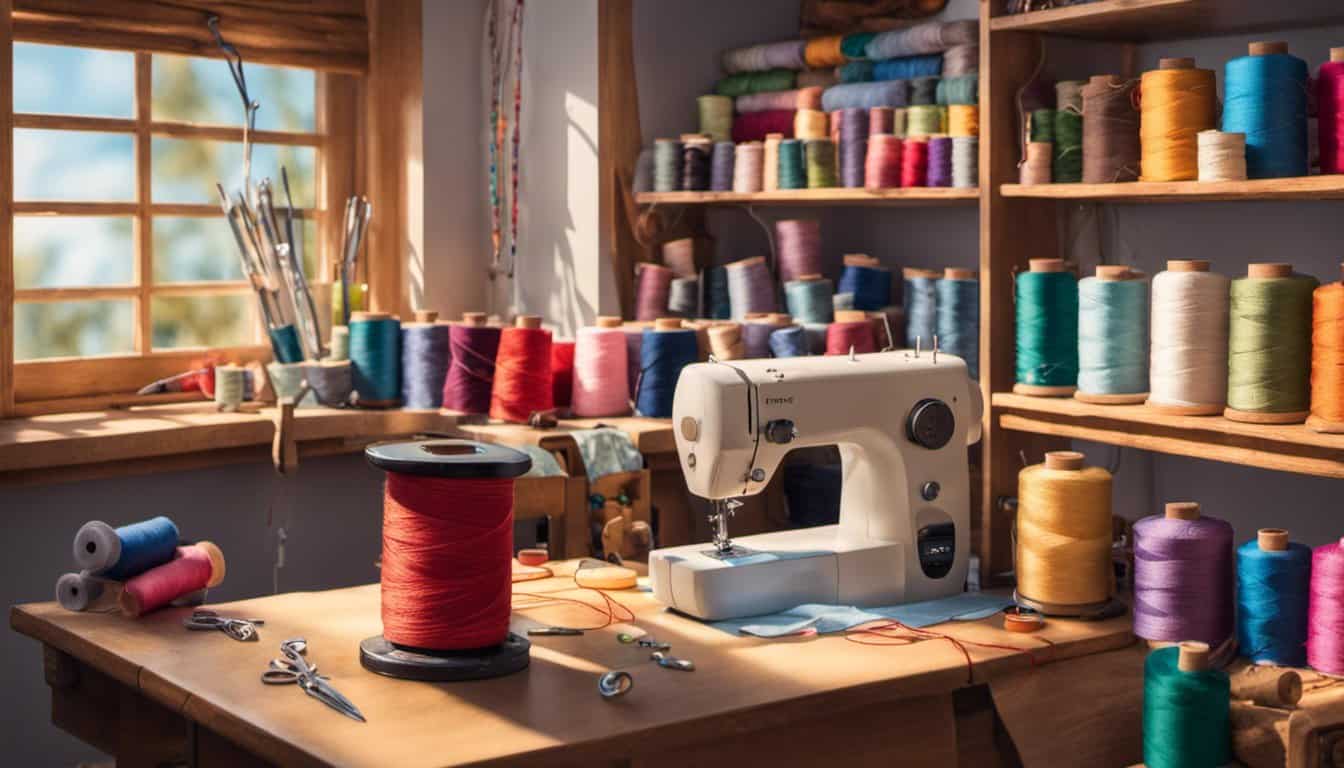
But hey—why not both? If budget allows it, having both machines in your arsenal will cover all bases! You can create beautiful pieces with varied stitches using your sewing machine while leaving the solid seams and professional finishes to the serger!
Remember—it’s about choosing what suits your needs best! So, take a deep breath, consider what you want from your machine, and make your choice. Happy sewing!

